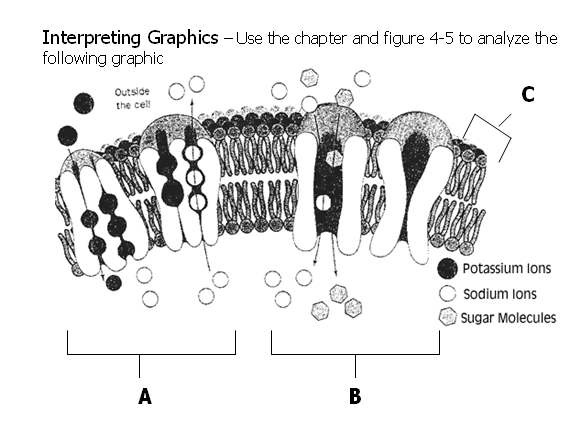Reading Guide: 4-2 ...........................................................Name
__________________________________
1. The transport of a substance across
the cell membrane against its concentration gradient is called _____________________________________________
2. Carrier proteins in active transport
functions as ___________________ to move substances against the concentration
gradient.
3. Put the following in the correct
order
______ Pump changes shape and released 3 sodium ions outside the cell
______ Two potassium ions are released inside the cell
______ Three sodium ions bind to the sodium-potassium pump
______Two potassium ions bind to the pump
4. Which of the following could happen
if the sodium potassium pump stopped working (check all that apply)
______ The cell would not get enough sodium
______ The cell could burst
______ Potassium would build up inside the cell
______ The cell might have difficulty transporting glucose
5. [ Endocytosis / Exocytosis ] moves
substances to the inside of the cell.
6. During endocytosis, a pouch is
formed, this pouch is called a ________________________
7. Membrane Receptor Proteins Receive
________________________
8. You body's cells must communicate
with each other to _________________________ growth, metabolism, and other activities.
9. A receptor protein is a protein
that binds to a ____________________________
10. When a signal molecule binds
to the receptor protein (fig 4-8) the ion channel [ opens / closes ]
11. Some drugs, like heroin imitate
_______________________________
123. Beta blockers keep the heart
rate from [ increasing / decreasing ]
13. (See Health Watch, page 86) Myasthenia
gravis is a disease characterized by abnormal _____________________ and severe
muscle _____________________
14. In a person with MG, the immune system attacks receptor proteins on ___________
cells

1. The picture represents both active
and ___________________transport.
2. The ______________________-potassium pump removes _____ sodium ions while
taking in ______ potassium ions
3. Active transport involves the use of ___________, or energy.
4. The black circles in the diagram represent _____________________________________
5. Carrier proteins are used in ______________________ transport and do not
require the cell to expend energy. This type of diffusion is called __________________________________
diffusion.
6. Which area represents passive transports (A, B or C) ________________
7. Glucose moves [ against / with ] the concentration gradient.
8. Name two molecules that move across the membrane by diffusion: ____________________
and ____________________________
9. Which area of the diagram shows the phospholipid bilayer (A,B, or C) ___________________
10. One would expect the concentration of sodium to be [ higher / lower ] inside
the cell.
